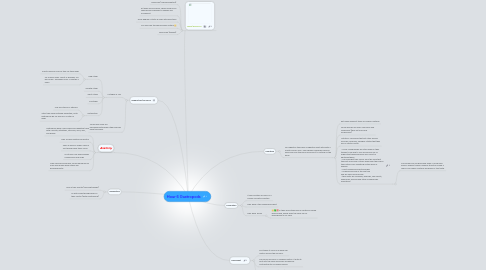
1. Respiration
1.1. Gills in their mantle (land gastropods)
1.2. Or with lungs through holes in their mantle (water gastropods)
2. Anatomy
2.1. Gastropods have a very advanced digestive track with a mouth, intestines, stomach, anus, liver, and kidney
2.2. They all have bilateral symmetry
2.3. They all have an organ called a foot which helps them move
2.4. Most have one shell besides nudibranchs and slugs
2.5. They reproduce sexually: some reproduce by male and female while others are hermaphroditic.
3. Sense/Response
3.1. sensory tentacles that sense chemicals (chemoreceptors)
3.2. pit eyes and lens eyes. These range from seeing basic shadows to shapes and movement.
3.3. some degree of taste & smell with eye stalks
3.4. can feel pain through nervous system :(
3.5. small brain (ganglia)
4. Repduction/life cycle
4.1. 5 Stages in Life
4.1.1. Egg Stage
4.1.1.1. Adults leave as soon as they lay their eggs
4.1.1.2. For marine slugs- about 6-8 weeks For land slugs - anywhere from 2 months-2 years
4.1.2. Growth Stage
4.1.3. Adult Stage
4.1.4. Courtship
4.1.5. Fertilization
4.1.5.1. Can be internal or external
4.1.5.2. After they have fertilized eachother, both gastropods go off and lay a cluster of eggs
4.2. Some land snails are hermaphrodites while other species have two sexes
5. Movement
5.1. Foot helps it move in a wave-like motion across the sea floor.
5.2. The conch moves in a jumping motion. It puts its foot into the sand and jumps forward by contracting its columella muscle.
5.3. slime is produced by the foot
6. Circulation
6.1. It can be either an open or a closed circulatory system
6.2. They have a two chambered heart
6.3. They have blood
6.3.1. In their blood they have a substance called hemolymph, which does the same job as hemoglobin in our cells.
7. Digestion
7.1. For digestion they have a digestive draft with both a mouth and an anus. Tube shaped Nephridia remove ammonia from the blood removes it to outside of the body.
7.1.1. Eat many different types of organic material
7.1.2. Some species are even carnivores and fungivores (they eat mold and mushrooms)
7.1.3. Nutrition: carnivores that eat other smaller mollusks, hydroids, sponges; stated that they lack a 'mantel cavity'.
7.1.4. • Some Nudibranch’s will store algae in their tissues to be able to live and survive off of sugars that algae produces as a result of photosynthesis • The slugs get their colors from the food that they eat and some of them even keep the poison they obtain from ingesting certain prey of species. • Most Nudibranch’s eat sponges • Nudibranch’s live in the low tide and are shell less mollusks • their diets are: sponges, hydroids, sea squirts, anemones, jellyfish and other Nudibranch’s sometimes
7.1.4.1. Conch feed on sea grass and algae. Conch feed using a flexible tongue-shaped-structure called a radula. The radula contains hundreds of tiny teeth.
